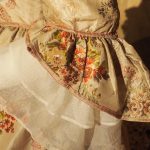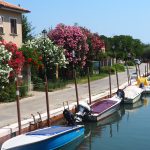Pellestrina is a narrow strip of land, 11 km long, that separates the Venetian lagoon from the Adriatic sea. You can reach Pellestrina by bicycle, by bus or by private boat from the Lido (or from the half island Chioggia).
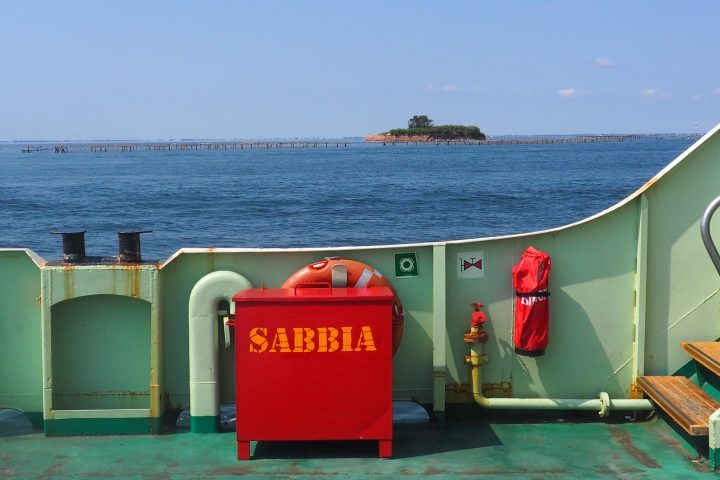
reaching Pellestrina by bus, here on the ferry from the Lido
Why is charming Pellestrina a worthwhile journey ?
It used to be a fishing village with big vegetable gardens looked after by entire families of pelestrinotti. Unfortunately in the 1950ies and 60ies fishing techniques changed as a result of the introduction of speed boats, new types of fish and the building of new housing complexes replaced the ancient green vegetable areas.
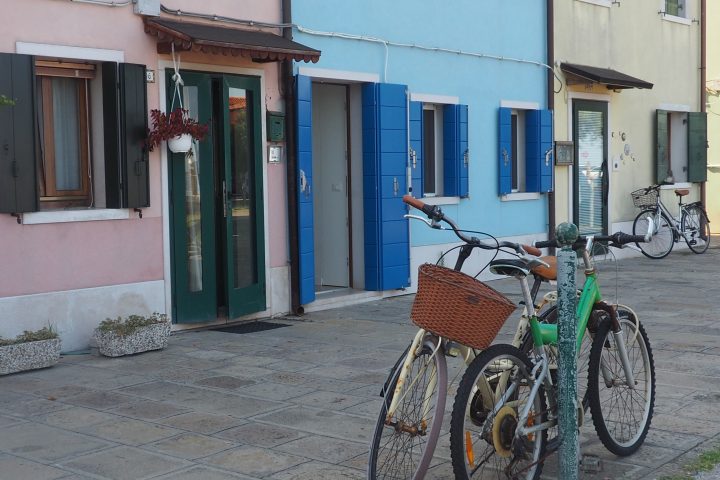
a few coloured houses in Pellestrina
No doubt it is an island of contrasts, the Eastern natural, nearly wild side facing the Adriatic sea ending in nice sandy dunes at Ca’ Roman and the Western side built and inhabited (3700 inhabitants) and lined with fish restaurants overlooking the lagoon and serving seafood dishes.
SAN PIETRO IN VOLTA
We get off at San Pietro in Volta, cross quickly the width of the island and reach on the lagoon side the Church of San Peter with a frescoed ceiling depicting episodes from the life of the fisherman Peter.
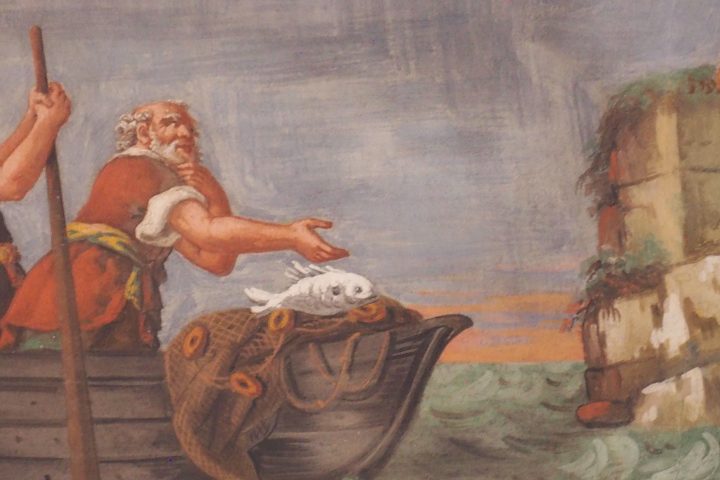
detail of Saint Peter in the Sea of Galilee
IL PICCOLO MUSEO DELLA LAGUNA SUD
We walk further on and in a few minutes we reach il piccolo Museo della Laguna Sud.
Opened in 2007 this small but interesting museum of the lagoon is located in 3 rooms of a former school in San Pietro in Volta. It is run by volunteers who open it on Saturdays and Sundays from 10 a.m. to 12 noon.
The first room SALA BIANCA is dedicated to the history and geography of Pellestrina, how this scrap of land constantly changed in a natural way (due to sea erosion, subsidence, eustatism) and also artificially when the Venetian Republic worked on and enlarged its defence system.
Documents mention already around the 11th century churches and salt pans in Pellestrina. The oldest existing map however dates back to the 16th century. By the way, originally there were 2 islands, Pastene and Pellestrina, this was where nowadays Portosecco is.
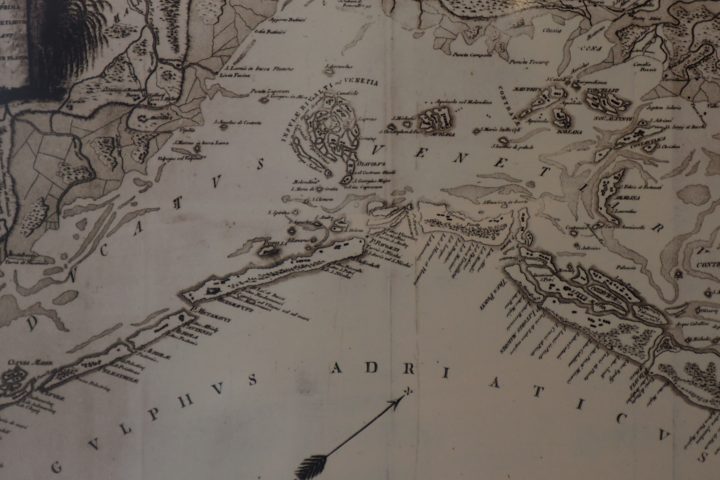
map of lagoon, on the left bottom side you recognize 2 separate islands
The white rooms show how the first protections (palade) were added in the 13th century, how they were constantly repaired after coastal storms, reinforced and replaced by the important engineering project, the construction of the MURAZZI in the 18th century. These gigantic seawall line embankments in Istrian stone became the last achievement of the Republic.
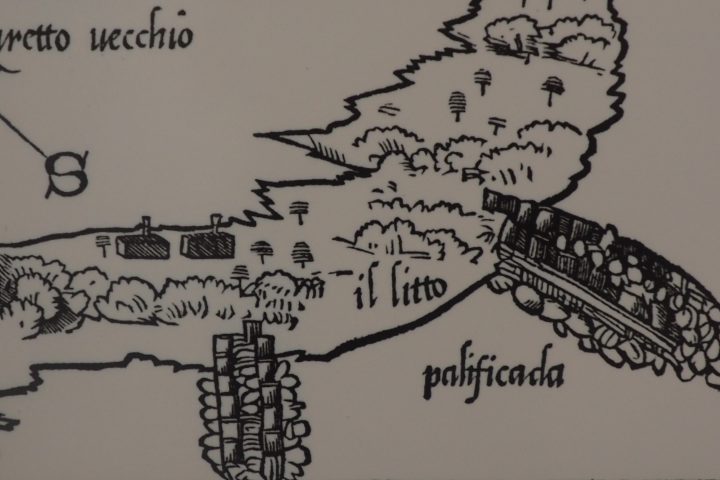
the first protections (palade)
The second room SALA NERA consists of a black, dark, nearly oppressive room where old photos and a 15 minutes’ long video show the devastating, disastrous flood of 1966. Pellestrina always served as a shield for Venice.
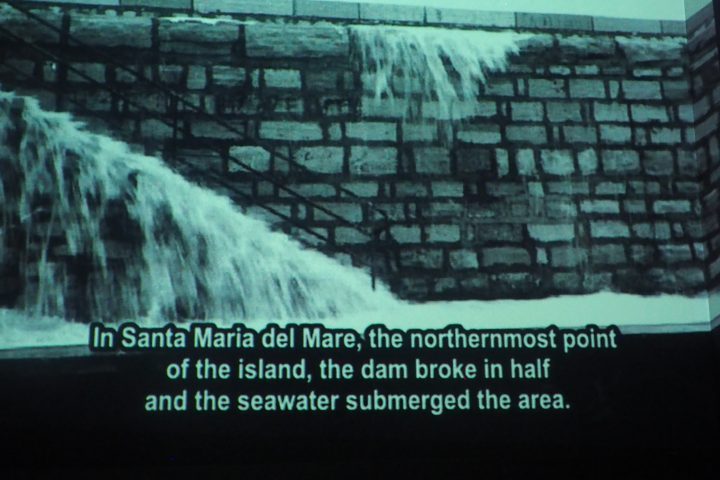
one image of this dramatic video
The third room SALA AZZURRA leads us through its blue colour to the relaxing seabed of the Venetian lagoon, its boats, nets, equipment and fishing techniques.
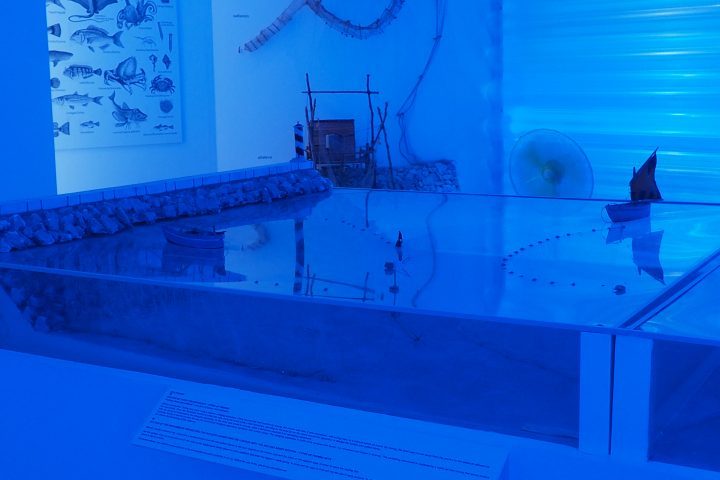
the Venetian seabed
The Venetian lagoon consists of 75 percent of brackish water, where there is water there are fish, a big variety of fish. Look at all the different types of nets… can you guess why in the lower part there is lead and in the upper one cork?
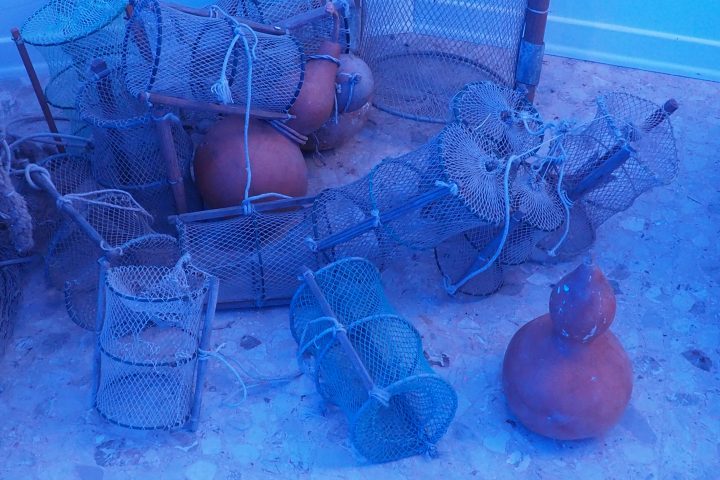
fishermen’s nets
Learn about how the length of these nets depends on the type of fish you are hoping to catch, when they must be caught, when the tide comes in for example, by adding a small light at the end of the net.
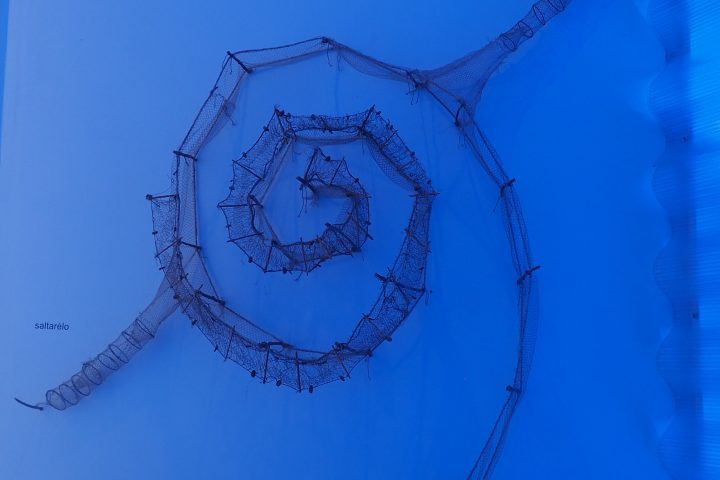
Salatarello is a specific net where jumping fish can be caught
Several other places such as Santo Stefano in Portosecco, Sant’Antonio, San Pietro Apostolo and Ognissanti lie on the way down to Ca’ Roman.
Discover anecdotes and stories about the names of the main areas (Zennaro, Vianello, Busetto, Scarpa), about the tradition of bobbin lace (merletto a tombolo), yarns rolled up on spools.
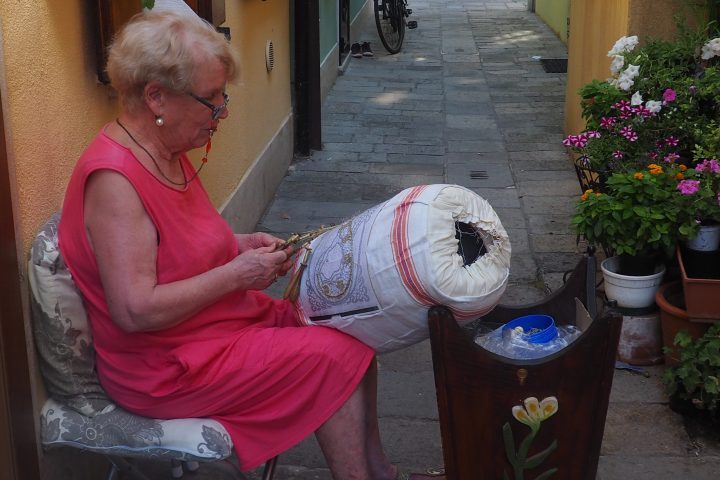
merlettaia lace maker using the old Pellestrina bobbin lace, no longer living there, and her padded cushion
Fiona Giusto
www.venicetours.it



